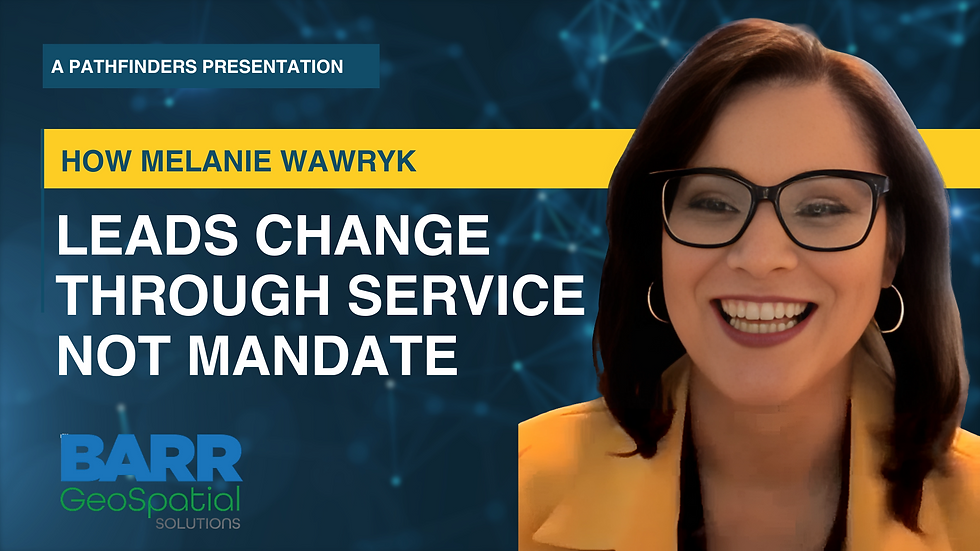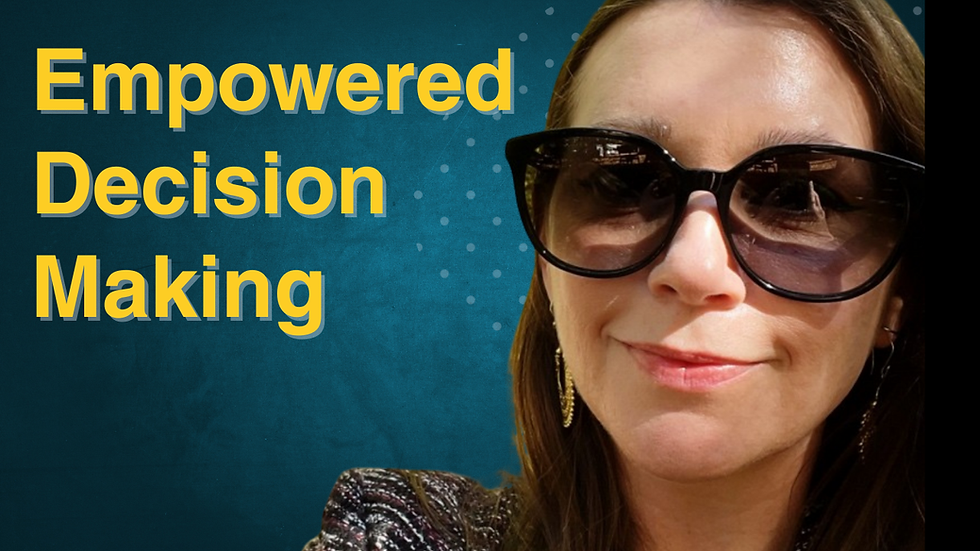Melanie Wawryk: The Magic in the Middle
- Barr GeoSpatial

- Sep 1
- 4 min read
When Everyone Else Saw Just Data, She Saw Connections
Twenty-five years ago, Melanie Wawryk started at the City of Kitchener doing the most basic GIS work possible: digitising parcels, one property line at a time. It was painstaking work that most people saw as simply data entry. But Melanie saw something different—she saw the foundation for everything a city needed to function.
While other municipalities treated GIS as a mapping department, Melanie envisioned something revolutionary: a central nervous system that could connect every department, every service, and every citizen need. What started as digitising property boundaries would eventually transform how an entire city operates.

Today, her vision has become reality. When a water main breaks in Kitchener, field crews use mobile apps that automatically generate work orders, track costs, and update multiple systems simultaneously. When the city plans new tree plantings, they use equity algorithms to ensure underserved neighbourhoods get priority. When departments need maps, they don't wait weeks—they access real-time data that updates across the entire municipal enterprise.
The secret wasn't in the technology. It was in understanding that the real magic happens "in the middle."
The Problem Everyone Accepted as Normal
Most municipalities operate like disconnected islands. Planning uses one system. Public works uses another. Finance uses a third. When someone needs information that crosses departments, they make phone calls, send emails, and wait. Projects get duplicated. Data gets stale. Citizens get frustrated.
"I found that a lot of people didn't understand the enterprise," Melanie reflects. "Things are just done on a project level."
The traditional approach treats each department's needs as separate problems requiring separate solutions. Someone asks for a map of stop signs, you make a map of stop signs. Someone else asks for school locations, you make another map. Every request becomes a one-off project that doesn't connect to anything else.
Melanie saw this differently. What if every map, every dataset, every solution became part of a larger system that could serve multiple needs simultaneously?
Her breakthrough insight: instead of asking "How do we solve this specific request?" she started asking "How do we build something that serves this need and anticipates future ones?"
Building Bridges, Not Islands
Melanie's transformation began with a simple shift in approach. When departments requested maps or data, she'd respond with questions instead of immediate solutions.
"We kind of ask them what they're trying to accomplish," she explains. "Oftentimes people will come to us with a solution, and we'll say, 'No, what is it that you're trying to accomplish?'"
This listening-first approach revealed something powerful: departments weren't really asking for maps—they were asking for better ways to serve citizens. The maintenance crew didn't need a stop sign map; they needed efficient work order management. The planning department didn't need separate school data; they needed integrated demographic analysis.
Melanie started building each solution as part of an enterprise system. When CityWorks work order management came online years later, Kitchener already had all the data layers ready—not because they'd planned for that specific system, but because they'd built with integration in mind.
The magic wasn't in any single technology. It was in the patient work of connecting systems that had never talked to each other before.
The Coaxing Revolution
Melanie's biggest challenge wasn't technical—it was human. Field workers who'd spent decades with clipboards suddenly faced tablets. Operators with thick gloves worried they couldn't use touchscreens. Long-time employees feared computers would complicate their jobs rather than simplify them.
"There's often fear from the operational side," Melanie acknowledges. "They're busy doing their work. They don't have time for computers."
Her solution was radical patience. Instead of mandating change, she practised what she calls "coaxing people along." She'd sit with water crew operators, showing them how apps worked while also helping them clear personal photos from their phones. She'd implement solutions gradually, always with the promise that if something didn't work, they could go back to paper.
The transformation took time. But once people experienced how connected systems could eliminate duplicate data entry and provide real-time information, they became advocates.
"Once they start, they love it," Melanie notes. "Then it's like, 'Can you do this for us? Can you do this for us?'"
Your System-Building Pathway
For changemakers reading this, Melanie's journey offers a masterclass in building sustainable, scalable impact. Her story demonstrates how patient infrastructure-building can create exponential returns over time.
Melanie's approach reveals four key principles for systems-level change:
Start with listening, not solutions.
Melanie's breakthrough came when she stopped providing what people asked for and started understanding what they actually needed to accomplish.
Build for the long game, not the immediate request.
Every solution became part of a larger enterprise system, creating compounding value over decades rather than one-time fixes.
Focus on connection points, not individual components.
The real magic happened where systems met—in the "middle" where data flowed between departments and served multiple purposes simultaneously.
Lead change through service, not mandate.
Melanie transformed an entire municipality by making people's jobs easier, not by forcing them to adapt to new systems.
Consider these reflection questions:
• What recurring requests in your work might signal opportunities for systematic solutions rather than one-off fixes?
• Where are the disconnected islands in your organisation that could benefit from better integration?
• How might you practice "listening for what people are trying to accomplish" rather than immediately providing what they ask for?
• What would it look like to build your next solution as part of a larger system rather than a standalone project?
Ready to explore more of Melanie's insights on building enterprise-level systems that serve human needs?
Explore the full episode to discover her strategies for patient transformation, practical approaches to helping people embrace new technologies, and frameworks for creating lasting organisational change through incremental but connected improvements.







Comments